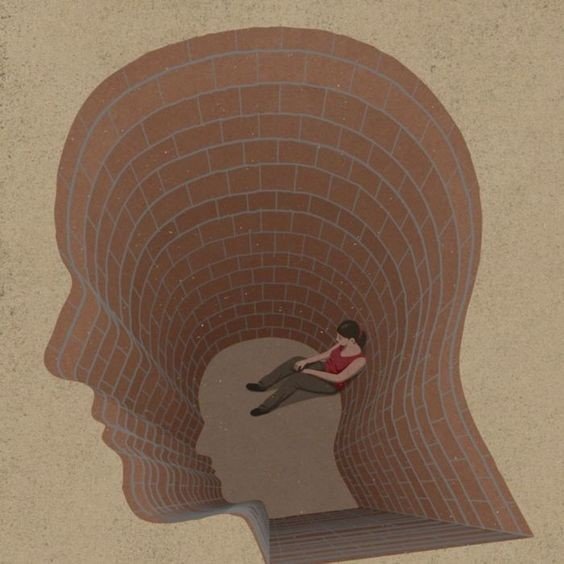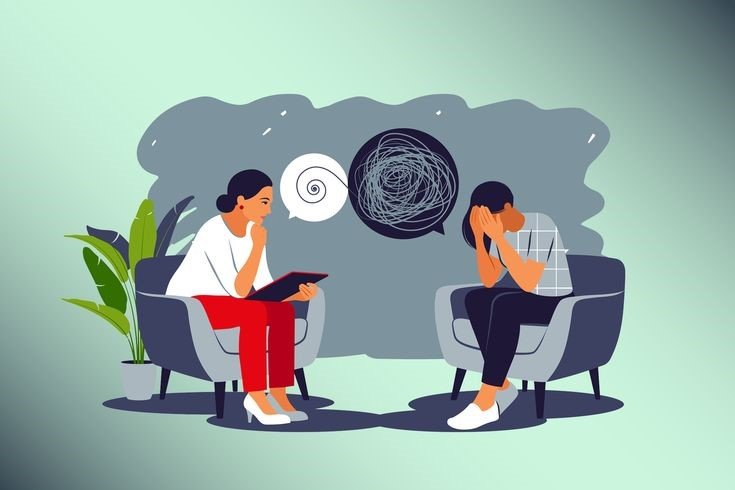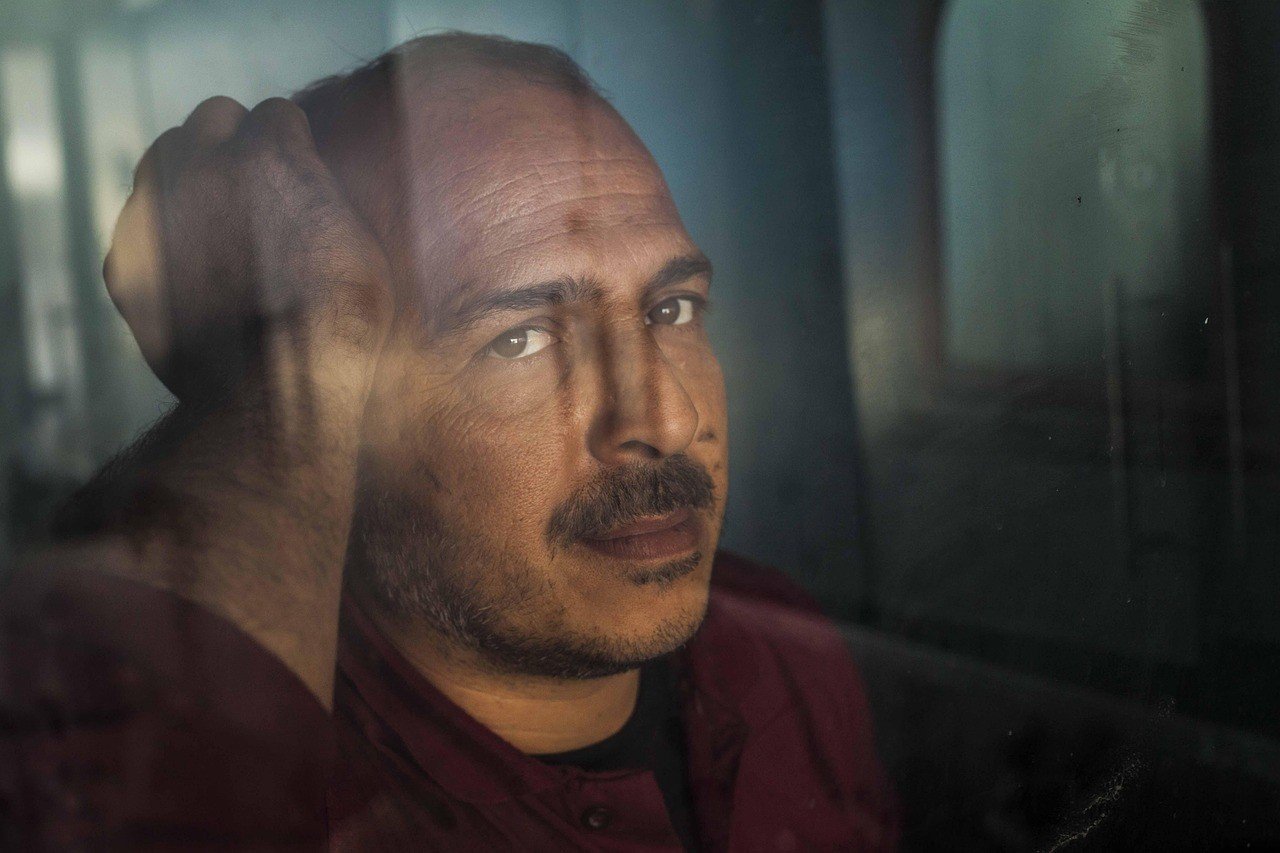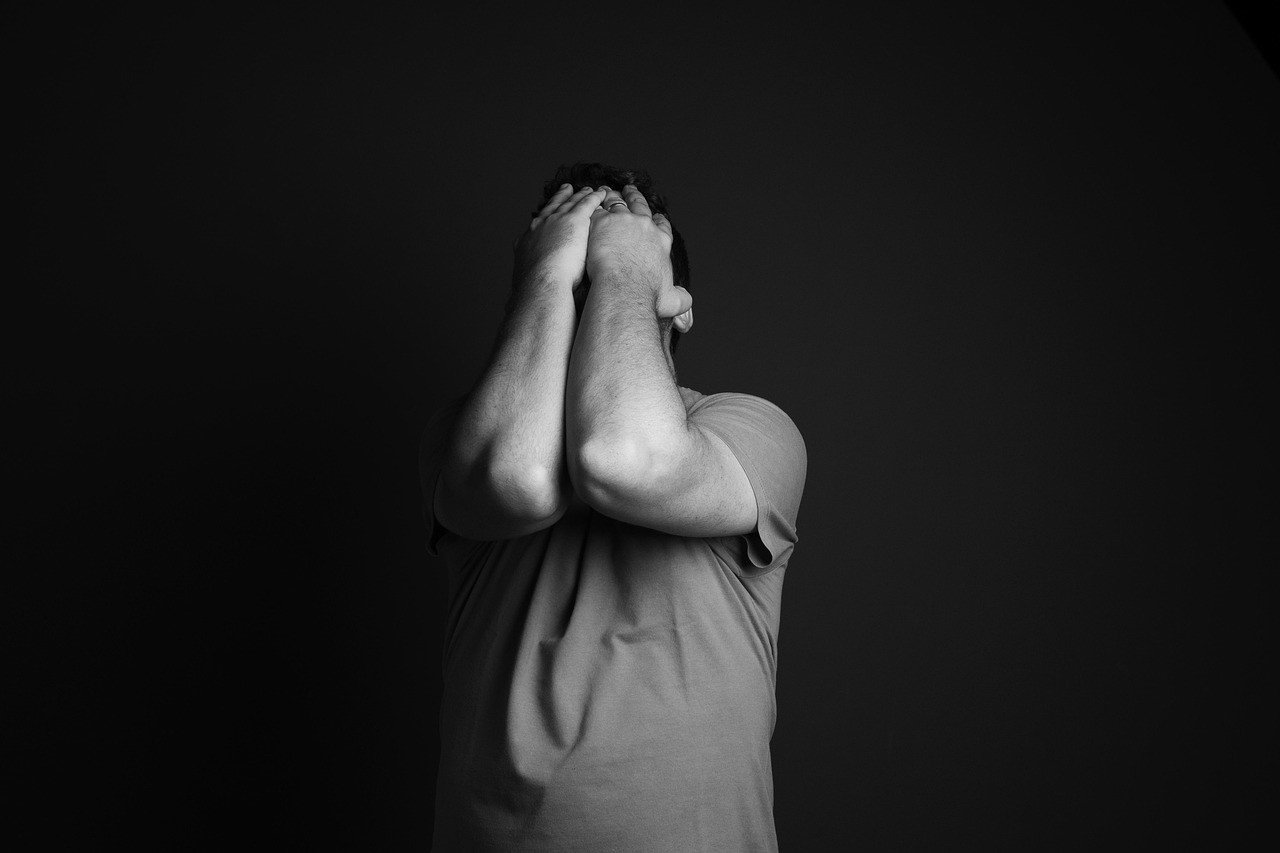Psychotherapy for Anxiety and Depression
A Personal Perspective from the Therapy Room
I still remember one of my very first clients in California, let’s call her Emily. She walked into my office on a Tuesday afternoon, eyes darting to the floor, hands tightly gripping her bag. She’d been living with anxiety for years, the kind that leaves your chest feeling tight even on the most “normal” days. On top of that, she was battling depression, waking up with a heaviness that no amount of coffee could lift.

When she first sat down, she whispered, “I’m not sure I belong here. People have real problems… mine just feel… messy.” And that’s when it struck me (again): anxiety and depression are real problems, but they often convince you they’re not serious enough to deserve help.
Over the years, I’ve heard versions of Emily’s story countless times, from busy professionals in downtown Los Angeles, to university students in San Diego, to parents balancing three kids and a demanding job in the Bay Area. Anxiety and depression rarely show up alone. They tend to feed off each other, making it hard to know where one ends and the other begins. And if you’ve ever been in that loop, feeling too anxious to rest, then too depressed to act, you know how exhausting it can be.
Psychotherapy, when done right, is more than just “talking about your feelings.” It’s about untangling that knot of thoughts, emotions, and behaviors that keep you stuck. And here in California, with our fast-paced culture, high expectations, and, let’s be honest, sky-high cost of living, that knot can tighten quickly if we’re not careful.
So, in this guide, I want to walk you through what psychotherapy for anxiety and depression really looks like, not just the textbook definition, but the real-life, in-the-room process. We’ll talk about how different approaches work, why some succeed where others fail, the biggest challenges clients face (and how we tackle them), and the kind of progress you can realistically expect.
Because here’s the truth: with the right therapy, anxiety and depression don’t have to control your life. And yes, I’ve seen it happen, over and over again.
Why Psychotherapy for Anxiety and Depression Is More Important Than Ever
Anxiety and depression aren’t just “having a bad week” or “being a little stressed.” They’re clinical conditions that affect how you think, feel, and function, every single day. The tricky part? They often work in tandem. Research from the National Institute of Mental Health shows that nearly 50% of people diagnosed with depression also meet the criteria for an anxiety disorder. This overlap is especially challenging because symptoms can mask or worsen each other.
In California, I see this dual struggle more than almost anywhere. Part of it is our environment, the cost of living, competitive job markets, social media comparisons (everyone’s life looks “perfect” online), and the subtle but constant pressure to “have it all together.” But there’s also a cultural layer: in some communities, talking about mental health still carries a quiet stigma. I’ve had clients tell me they’d rather say they’re “just tired” than admit they’re anxious or depressed, even to close friends or family.
And here’s where the real problem lies: untreated anxiety and depression don’t usually disappear on their own. In fact, they can become more entrenched over time. Without proper therapy for anxiety disorders and depressive disorders, people often find themselves:
- Avoiding situations they used to enjoy (social events, hobbies, even work opportunities)
- Experiencing physical symptoms like headaches, stomach problems, and sleep disturbances
- Struggling to make decisions, remember details, or maintain focus at work or school
- Feeling isolated and disconnected from loved ones
- Losing confidence in their ability to cope
Now, psychotherapy, especially evidence-based approaches like Cognitive Behavioral Therapy (CBT), Interpersonal Therapy (IPT), and Psychodynamic Therapy, can directly address the thought patterns and behavioral habits that keep these conditions alive. A 2018 meta-analysis by Weitz et al. found that psychotherapy for depression also significantly reduces anxiety symptoms, even when anxiety wasn’t the primary treatment target. That’s powerful evidence that we can make meaningful changes that ripple across both conditions.
But there’s another layer we can’t ignore: access. While California has some of the best-trained therapists in the country, there are still barriers, cost, availability, and for some, the belief that “therapy is a luxury.” In my experience, the opposite is true. Therapy is a life skill. The sooner you learn it; the sooner you can stop the downward spiral.
In short: psychotherapy for anxiety and psychotherapy for depression aren’t just treatments. They’re tools for reclaiming the parts of your life these conditions have taken. And the sooner we start, the more we can prevent the cycle from tightening its grip.

Real-Life Stories: How Psychotherapy Changes Lives
Clinical definitions and research findings are important, but sometimes, the best way to understand psychotherapy’s impact is through the stories of those who’ve lived it. While these examples are composites to protect confidentiality, they reflect real situations I’ve encountered in my California practice.
Case 1: The Constant Worrier (Anxiety Focus)
Let’s call him Mark. A 34-year-old software engineer from San Jose, Mark came to me after months of sleepless nights and a racing mind that wouldn’t switch off. He’d read about the best psychotherapy for anxiety and wanted something practical, not just “talking about feelings.”
We started with Cognitive Behavioral Therapy (CBT), focusing on identifying and challenging his anxious thought patterns. In one session, we mapped out his “catastrophe ladder” , how a small work email could spiral into imagining losing his job, his home, and his relationships. Over 12 weeks, we worked on realistic thought reframing and gradual exposure to triggers he’d been avoiding (presenting at meetings, making difficult phone calls).
Six months later, Mark still had moments of anxiety, that’s normal, but he had tools to stop it from snowballing. He told me, “I feel like I finally have a brake pedal in my brain.”
Case 2: The Hidden Sadness (Depression Focus)
Next, meet Sofia, a 42-year-old teacher from Los Angeles. Outwardly, she seemed fine, smiling in the classroom, chatting with colleagues. But at home, she barely had the energy to cook or return calls from friends.
For Sofia, the best psychotherapy for depression turned out to be a blend of Interpersonal Therapy (IPT) and behavioral activation. We explored how recent life changes, her kids leaving for college, the loss of a close friend, had triggered feelings of isolation. Alongside emotional processing, we scheduled small, achievable activities that gave her a sense of purpose and connection.
By week ten, she described her mood as “lighter” and had joined a weekend hiking group. The depression didn’t vanish overnight, but she said, “I feel like myself again, and I didn’t think that was possible.”
Case 3: The Double Bind (Anxiety + Depression)
Finally, there’s David, a 28-year-old graduate student from Sacramento who came in saying, “I’m too anxious to relax, and too depressed to get moving.” This is the loop I mentioned earlier, anxiety fueling depression, depression feeding anxiety.
David’s therapy was integrative. We used CBT techniques for his anxiety, but also brought in mindfulness-based cognitive therapy (MBCT) to help him manage the ruminative thoughts that kept both conditions alive. The work wasn’t easy, there were weeks where progress felt slow, but over time, he learned to notice his thought spirals without automatically believing them.
A year later, David still checks in every few months for “tune-up” sessions. His grades are back up, he’s reconnecting with friends, and he told me something that stuck: “I’m living again, not just surviving.”
These aren’t miracle stories. They’re examples of what happens when clients commit to therapy, when we find the right approach for their unique needs, and when we address both the psychological and practical sides of mental health.
Practical Psychotherapy Solutions for Anxiety and Depression
There’s no one-size-fits-all “best psychotherapy” for anxiety or depression, but there are tried-and-true approaches supported by strong research. The key is matching the right method to the individual’s needs, history, and goals. Below, I’ll walk you through the strategies I use most often in my California practice, along with when and how they’re applied.

- Cognitive Behavioral Therapy (CBT)
Best for: Anxiety disorders, depressive disorders, and combinations of the two.
How it works: CBT is structured, goal-oriented, and focuses on the connection between thoughts, feelings, and behaviors.
Step-by-step application in therapy:
- Identify triggers : We list situations, thoughts, or events that spark anxiety or sadness.
- Challenge unhelpful thoughts : Using evidence-based questioning (“What’s the proof for and against this thought?”).
- Behavioral experiments : Gradual exposure to feared situations or trying new coping behaviors.
- Homework : Clients practice skills between sessions for faster progress.
Research highlight: Compton et al. (2004) found CBT to be highly effective for both anxiety and depression in children and adolescents, with benefits that extend into adulthood when skills are maintained.
- Interpersonal Therapy (IPT)
Best for: Depression triggered or worsened by life changes, grief, or relationship issues.
How it works: IPT focuses on the link between relationships and mood, helping clients navigate life transitions, role disputes, and interpersonal conflicts.
Step-by-step application:
- Mapping social connections : Identifying key relationships and their impact on mood.
- Role transition support : Adapting to changes like divorce, career shifts, or empty nest syndrome.
- Conflict resolution skills : Practicing healthy communication and boundary-setting.
- Grief work : Processing loss in a supportive, structured way.
- Mindfulness-Based Cognitive Therapy (MBCT)
Best for: Preventing relapse in depression, managing chronic anxiety, breaking rumination cycles.
How it works: MBCT blends CBT tools with mindfulness meditation to help clients observe their thoughts without judgment.
Step-by-step application:
- Mindfulness training : Short daily practices focusing on breath, body sensations, or sounds.
- Thought observation : Learning to notice thoughts as “mental events” rather than facts.
- Relapse prevention planning : Spotting early warning signs and using coping strategies immediately.
Research highlight: Weitz et al. (2018) found that psychotherapy for depression often reduces anxiety symptoms, and mindfulness-based approaches were especially effective for comorbid cases.
- Psychodynamic Therapy
Best for: Long-standing patterns, deep-rooted emotional conflicts, or when CBT alone isn’t enough.
How it works: This approach explores how past experiences, especially early relationships, influence current feelings and behaviors.
Step-by-step application:
- Exploring patterns : Noticing recurring themes in relationships and emotions.
- Making unconscious thoughts conscious : Bringing hidden beliefs into awareness.
- Working through resistance : Addressing discomfort that arises when change feels threatening.
- Combining Therapy with Medication
Best for: Moderate to severe anxiety and depression, especially when symptoms significantly impair daily function.
How it works: While psychotherapy addresses underlying patterns, medication prescribed by a psychiatrist can stabilize mood and reduce symptom intensity.
Step-by-step application:
- Assessment : Evaluating severity and discussing referral options.
- Coordination : Collaborating with psychiatrists to align treatment goals.
- Monitoring : Tracking how medication affects mood and therapy progress.
Quick Takeaway: The most effective therapy isn’t about picking “the best” in isolation. It’s about choosing the best fit for your symptoms, personality, and circumstances, and adjusting along the way.
How Clients Put Therapy Into Practice (and What We Learned Along the Way)
One of the most common misconceptions about psychotherapy for anxiety and depression is that the change happens in the session. The truth? The real transformation often happens between sessions, in everyday moments when clients test-drive the skills we’ve been practicing.
Mark’s “Catastrophe Ladder” in the Real World
(Anxiety case)
In our CBT work, Mark’s biggest takeaway was catching himself halfway up the “catastrophe ladder.” One week, he got an email from his manager saying, “Can we talk later today?”
Old Mark:
- Immediate thought: “I’m getting fired.”
- Emotional response: Panic.
- Physical response: Sweaty palms, racing heart.
New Mark (after 8 weeks of therapy):
- Paused.
- Asked himself, “What’s the actual evidence I’m in trouble?”
- Remembered our mantra: You can’t predict the future — you can prepare for it.
- Outcome: Turned out the meeting was about a new project, and he was being asked to lead it.
Sofia’s Social Reconnection Plan
(Depression case)
Sofia’s IPT homework was to engage in one small social interaction each day. At first, she resisted, “It feels fake if I’m forcing myself.” But by week three, she admitted that even small efforts, like chatting with the barista or texting an old friend, chipped away at her isolation.
One key adjustment we made: Instead of scheduling “big” outings that felt overwhelming, we focused on low-pressure, 15-minute connections. Over time, these small interactions became natural again, and her overall mood lifted.
David’s Mindfulness-on-the-Go
(Anxiety + Depression case)
David’s MBCT homework was to practice a three-minute breathing exercise twice a day. He struggled at first, often forgetting when he was busy.
Our solution: We tied the practice to daily habits. He did one session after brushing his teeth in the morning, and one before turning off his laptop at night. These cues helped him turn mindfulness into a reflex, so when anxiety hit during a study session, he could pause, breathe, and keep going instead of spiraling.
The Common Threads
Across all three cases, three factors made the difference:
- Personalization : The best psychotherapy for anxiety or depression adapts to your personality, lifestyle, and motivation level.
- Consistency : Small, regular practice beats occasional bursts of effort.
- Realistic expectations : Progress is rarely linear. There are setbacks — but they don’t erase the gains you’ve made.
When clients see that their therapy strategies actually work in real life, whether it’s calming themselves before a meeting, feeling less isolated, or catching anxious thoughts before they spiral , motivation skyrockets.
Challenges in Psychotherapy for Anxiety and Depression — and How We Overcome Them
Even the best psychotherapy plan can hit speed bumps. Anxiety and depression aren’t passive conditions, they fight back, often by making it harder to stay consistent with therapy. In California (and the U.S. in general), I see the same obstacles pop up over and over again. The good news? Each one has a solution.
- Motivation and Commitment Dips
The challenge: Clients start strong but lose steam after a few sessions, especially if progress feels slow.
The fix: We set micro-goals so success is visible early. Instead of aiming to “be anxiety-free” in three months (which is unrealistic), we focus on small wins, sleeping an extra hour, attending one social event, or completing one exposure exercise without bailing. Celebrating those wins keeps momentum alive.
- Social Stigma

The challenge: In some communities, therapy is seen as a sign of weakness, leading people to hide their struggles.
The fix: I normalize therapy as a form of “mental fitness.” I’ll say things like, “You wouldn’t wait for a toothache to disappear before going to the dentist. Therapy’s no different.” I also encourage clients to share success stories (in their own comfort zone) to help shift the narrative in their circles.
- Financial Barriers
The challenge: Quality psychotherapy can be costly, and insurance coverage isn’t always ideal.
The fix: I help clients explore sliding scale options, group therapy (which can be more affordable), and, in some cases, structured self-help programs with therapist check-ins. Some California counties also have low-cost community mental health centers worth exploring.
- Choosing the Right Approach
The challenge: Not every therapy works for every person — CBT might be a breakthrough for one client, but not for another.
The fix: I use an assessment + trial period method. We start with one evidence-based approach, evaluate progress after 6–8 weeks, and adjust if needed. This reduces the frustration of sticking with an ineffective method too long.
- Resistance to Change
The challenge: Some clients intellectually understand the tools, but emotionally resist using them — often because old patterns feel safer.
The fix: We address the why behind the resistance. Often, change threatens a person’s identity or comfort zone. Gentle exploration in session can make space for trying new behaviors without feeling like you’re losing yourself.
- Relapse Risk
The challenge: Symptoms can return after therapy ends, especially during high-stress periods.
The fix: I build relapse prevention plans into the final phase of therapy. Clients learn to spot early warning signs and revisit their tools before symptoms escalate. Many schedule “maintenance” sessions every few months to keep skills sharp.
- Accessibility Issues
The challenge: Limited therapist availability, long waitlists, or digital access barriers.
The fix: Teletherapy has been a game changer, but I also connect clients to reputable online programs, peer-support groups, and, for those in rural California, hybrid plans that mix occasional in-person sessions with virtual follow-ups.
- Privacy Concerns in Online Therapy
The challenge: Worries about confidentiality and data security in digital platforms.
The fix: I use HIPAA-compliant platforms, explain encryption policies up front, and encourage clients to choose private, quiet locations for online sessions. Transparency builds trust.
Bottom line: Challenges are part of the process, but they’re not dealbreakers. With the right adjustments, psychotherapy for anxiety disorders and depressive disorders can still produce lasting results, even in less-than-ideal circumstances.

Measuring Success in Psychotherapy for Anxiety and Depression
One of the trickiest parts of therapy is knowing when it’s really working. Spoiler alert: It’s not just about crossing off symptoms on a checklist. Success is multi-dimensional, and it often sneaks up on you when you least expect it.
- Symptom Reduction Is a Starting Point
Of course, fewer panic attacks or less daily sadness is a clear sign things are improving. We track symptoms with validated tools (like the GAD-7 for anxiety and PHQ-9 for depression), but I remind clients these numbers are just one piece of the puzzle.
- Increased Emotional Resilience
Success means you can face stress or setbacks without spiraling into panic or despair. It’s like building emotional muscle — you’re not invincible, but you recover faster and with less damage.
- Improved Functioning in Daily Life
Sometimes, clients say, “I still feel anxious, but I’m back at work, socializing, and handling responsibilities.” That’s huge progress. Being able to do life even with some symptoms means therapy is helping.
- Better Self-Awareness and Coping Skills
Clients often report, “I catch myself before anxiety takes over,” or “I can use the breathing exercises to calm down now.” These self-regulation skills are crucial success markers.
- Positive Shifts in Relationships
Depression and anxiety often isolate people. When clients reconnect with friends, improve communication, or handle conflict more calmly, it’s a clear sign therapy is working beneath the surface.
- Client’s Own Definition of Success
What success looks like varies wildly from person to person. I always ask clients to describe their own goals — sometimes it’s “feeling hopeful again,” sometimes “not crying every night,” or “being able to enjoy my favorite hobby.” Honoring those personal definitions keeps therapy relevant and motivating.
- Long-Term Maintenance and Growth
Even after symptoms ease, success means maintaining gains and continuing growth. Many clients choose to schedule periodic check-ins or join support groups to stay on track.
Case Snapshot: Emily’s Journey
Emily came in feeling hopeless and socially withdrawn due to chronic depression. After 4 months of IPT and CBT, she reported:
- Reduced daily sadness from “9 out of 10” to “3 out of 10”
- Reconnected with family members she hadn’t spoken to in months
- Started volunteering once a week
- Developed a daily mindfulness routine
Her success was not just symptom relief but a richer, more connected life.
Measuring success is not a one-size-fits-all checklist, it’s about celebrating small wins, tracking progress, and aligning with what matters most to each individual.
Ready to Take the Next Step? Let’s Heal and Thrive Together
If you’ve been reading this far, I’m guessing you’re serious about making a change, about moving from feeling overwhelmed by anxiety and depression to regaining control and joy in your life. That’s exactly why Heal-Thrive.com exists: to provide you with expert, compassionate support every step of the way.
Why Reach Out Today?
Because waiting often means more time lost to suffering. Whether you’re just starting to explore therapy or you’ve tried before without success, the right approach can make all the difference. Remember, psychotherapy isn’t a magic fix, it’s a partnership grounded in evidence, empathy, and your unique story.
How Heal-Thrive.com Supports You
- Personalized Therapy Plans: Based on your specific needs, backed by research.
- Experienced, Compassionate Therapists: Skilled in evidence-based approaches such as CBT, IPT, and MBCT for anxiety and depression.
- Flexible Scheduling: In-person sessions in California and surrounding areas, plus HIPAA-compliant teletherapy for convenience and privacy.
- Supportive Resources: Downloadable guides, tips, and follow-up tools to keep you on track between sessions.
Your Next Steps
- Contact Our Expert Team: Start with a free consultation call to discuss your goals and see if we’re the right fit.
- Download Our Free Guide: “Managing Anxiety and Depression: Practical Steps You Can Start Today” — packed with exercises and insights.
- Book Your First Session: Take the leap toward a brighter tomorrow with professional support.
Don’t Wait for Change — Create It
Therapy is a journey, not a destination. Every step you take is progress. Whether your anxiety feels manageable or your depression feels overwhelming, you don’t have to do this alone.
Click the contact button now, download your free guide, or book a session to start transforming your mental health today. Because you deserve to heal, and to thrive
